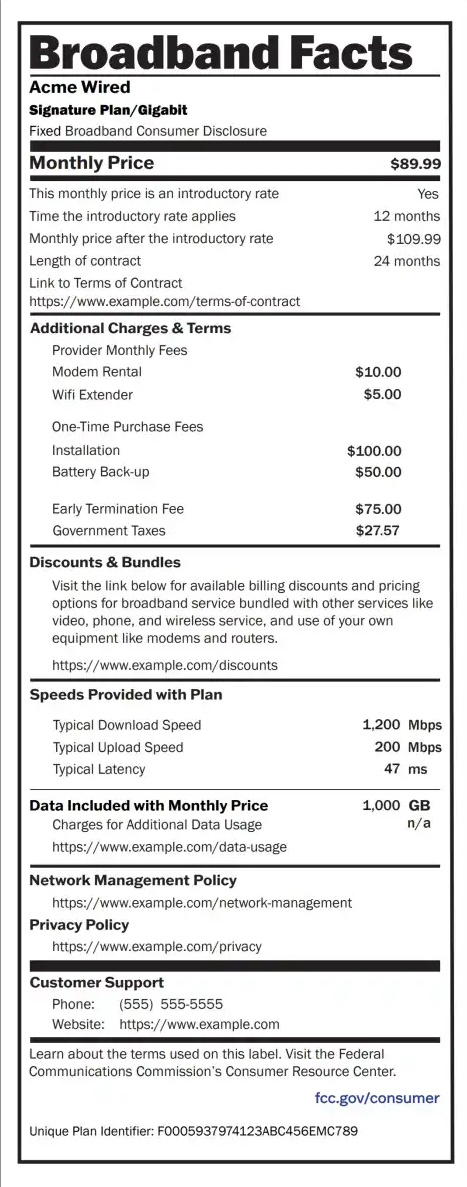
Broadband Labels are here to explain your internet bill details
posted Sunday Apr 14, 2024 by Scott Ertz
If you're anything like I am, you've had the same internet service provider (ISP) for years. Sure, I've upgraded plans in that time - 100 Mbps was the maximum you could get when I signed up - but the provider has always been the same. This has been, in large part, because it's a massive challenge to wade through the details of ISP plans when everyone uses marketing terms rather than industry terms to describe their services. At least with the same provider, you know what the words mean. Now Broadband Labels are here to make that comparison between services easier with consistent naming and descriptions - just like the panel on the side of your favorite cereal.
What are Broadband Labels?
Broadband Labels, also known as Broadband Consumer Labels, are designed to provide clear, easy-to-understand, and accurate information about the cost and performance of high-speed internet services. They are modeled after the FDA nutrition labels and are intended to help consumers comparison shop for the internet service plan that will best meet their needs and budget. Internet service providers that offer home, fixed internet services, or mobile broadband plans are required to have a label for each service plan they offer. Beginning April 10, 2024, consumers should look for broadband labels at any point of sale, including online and in stores. The labels must disclose important information about broadband prices, introductory rates, data allowances, and broadband speeds.
The goal of these labels is to give people accurate information for comparing plans. The labels are being mandated by the Federal Communications Commission (FCC) after more than a decade of lobbying by Consumer Reports and other advocacy groups. A rule requiring these labels was first adopted by the FCC in 2016 but was never implemented. Large internet service providers - those with at least 100,000 subscribers - are required to implement the new labels starting April 10. Smaller ISPs have until Oct. 10, 2024, to comply. The rule applies to all internet services, including the 5G wireless home internet now offered by T-Mobile and other companies.
How do the Broadband Labels work?
If you have ever looked at the Nutrition Label on the side of a food package, you already know how the Broadband Labels work - at least in concept. All of the information about your internet service plan are provided in a consistent and easy to read way. Starting at the top you'll see the name of your ISP and that name of the plan.
Below that in large print is the most important part - the monthly price for the service. That is followed by the breakdown of that price and how it might vary. This includes any carrier service fees, local, state, or federal fees, and taxes. It also breaks down what a contract looks like and any financial hit you might have for breaking that contract.
Next up is the speeds for the plan. These are the expected speeds, not necessarily guaranteed speeds. However, with the new rules, these speeds must be reasonably expected, not hypothetical speeds if no one else in the world is using the internet at the same time. It shows down speed, up speed, and even expected latency. It is important to note that things on your internal network might change your local speeds, so these numbers are between the modem and the network itself.
Next, you'll find details about bandwidth limitations. We know that several big carriers, including Comcast, have begun implementing bandwidth data caps on their home internet plans. If your carrier is one of them, you'll see that spelled out in this section. It will also have the fees or other scenarios for going over that number.
Finally, you'll find important company information, including customer service phone numbers, privacy policies, and even the unique plan code registered with the FCC. This gives a quick way to reference the details of the plan in the future, as well as a way to make a complain if you do not receive the features you are paying for.


